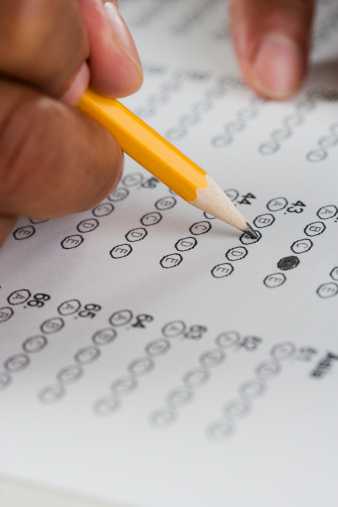by Suzy Parker
AFTER 2016, EVERYONE who takes the SAT will be getting a lower score—but it’s not because the test is getting tougher.
Instead, the scoring system for the long-dreaded college entrance exam is shifting back to its pre-2005 model, when the test was out of 1,600 points, not 2,400, and before an essay section was added. The new test will still ask students to write an essay, but colleges can choose whether or not to consider it, as those points won’t be calculated into the overall score.
Perhaps the best news for stressed students is that the new test will be over sooner; it will clock in at three hours—45 minutes shorter than the current one.
College Board President David Coleman announced the SAT redesign in a speech Wednesday at the South by Southwest education conference in Austin, Texas. The complete plans, along with new sample sections, were released April 16.
“It is time for an admissions assessment that makes it clear that the road to success is not last-minute tricks or cramming but the challenging learning students do every day,” Coleman said.
The change comes at a time when the tests being taken and the attitudes towards them are changing. Most states have implemented the Common Core State Standards, and new coordinating assessment tests are just now being unveiled. More students are taking the ACT—the SAT’s rival exam. And some universities are choosing to ignore such exams for college admittance entirely.
Over the last 25 years, the SAT was the No. 1 college admittance test in the country, according to statistics from FairTest. But in 2012 almost 1.7 million high school students took the ACT—about the same number of students who took the SAT. Last year, 139,000 more high school seniors registered for the ACT than for the SAT.
Traditionally the ACT and the SAT have been vastly different exams. The ACT, first given in 1959, is more of an achievement test, measuring what a student has learned in school. The SAT, which was created in 1926, has been an aptitude test, assessing reasoning and verbal abilities.
Last year ACT announced that it plans to allow students to take the test digitally as early as 2015, with results scored within minutes of students’ completing the test.
“My sense is that the upcoming changes in the SAT more directly reflect marketplace pressures to make the test look more like the ACT, which is now the nation’s most popular admissions exam,” says Bob Schaeffer, public education director at FairTest.
Schaeffer says the announced SAT changes failed to meaningfully address the concerns of independent researchers, standardized exam critics, and equity advocates. “It will not predict college success more accurately, assess low-income students more fairly, or be less susceptible to high-priced commercial coaching courses.” However, Coleman did announce that there would be a new partnership with Khan Academy, which will begin offering free courses of preparation both for the current SAT and the new one.
Schaeffer also noticed that the announcement did not include any real discussion of how Common Core might play into the SAT’s development. But with Coleman’s involvement in writing the Common Core standards, experts expect that they will play a role in the test’s new focus on evidence-based reading and writing, key aspects of the new standards.
Kate McKeon, president of Prepwise in New York City, tutors high school and postcollege students preparing for the undergraduate and graduate school admission process. Although the complete SAT test has yet to be revealed, McKeon says that it appears that the SAT’s authors may be trying to align the test more with Common Core standards, which 46 states have already adopted.
“The Common Core was developed to indicate that a student was ready to move on to a two-year or four-year institution or move into the workforce,” she says. “The SAT was built to demonstrate readiness for four-year colleges. The changes to the SAT appear substantial and in some ways—removing more abstruse vocabulary words—move the test down to a level that matches the objectives for the Common Core. But the SAT retains the right to test on mathematic subjects that are beyond the scope of the Common Core, so there’s no reason to think the SAT is completely gutting itself.”
Edward Fierros, a Villanova University associate professor who has long studied the complexity of college entrance exams, says the SAT changes are also a reflection of the changing demographics of college-going students and a smaller pool of college-age students.
“Colleges and universities are mindful of this demographic shift in college-going students, and are expanding and adapting their admissions requirements to accept students that may not have the ‘required’ SAT or ACT scores,” he says.
A recent study reported that there was no statistical difference in either college GPA or graduation rates between those who submitted scores and those who did not.
“For economic growth and social stability, America will need to find successful paths to higher education for hundreds of thousands of additional first-generation-to-college, minority, immigrant, rural, and L.D. students,” the report said. “This study provides the research support for optional testing as at least one route by which that can happen.”
Amid the SAT changes, more than 800 colleges and universities have become more “test optional” or more “test flexible” or have completely de-emphasized the use of standardized tests in making admissions, according to FairTest. That’s because some university leaders are realizing that many students cannot afford to take the tests because of socioeconomic and cultural factors, or that a single test doesn’t paint a clear picture of a student’s potential in college.

